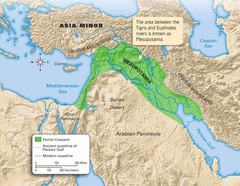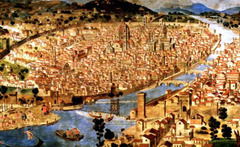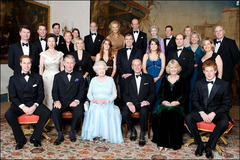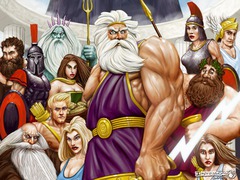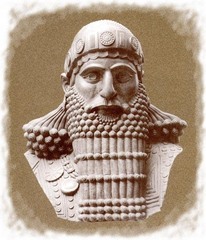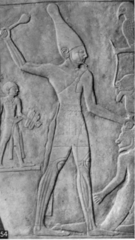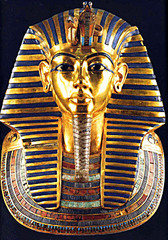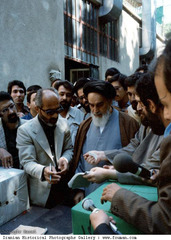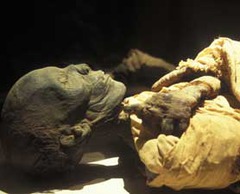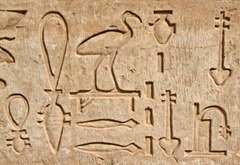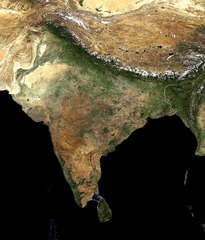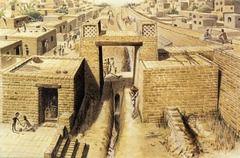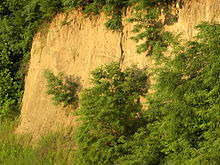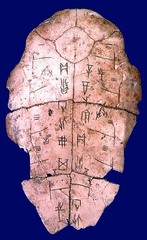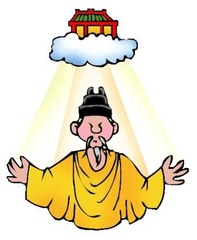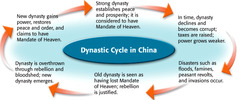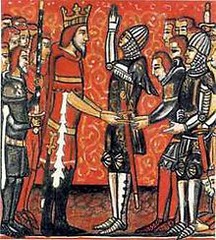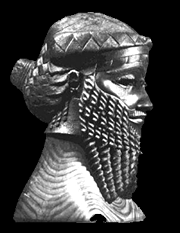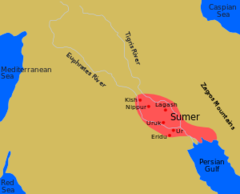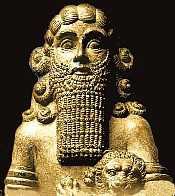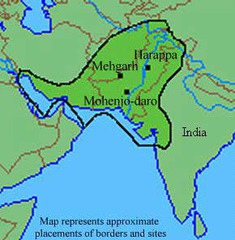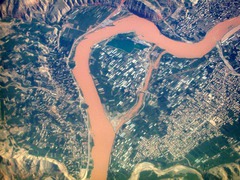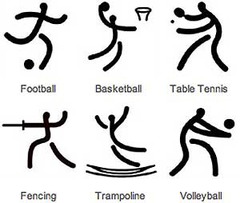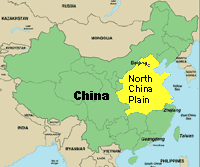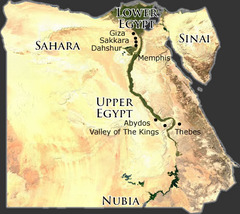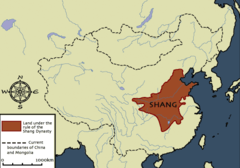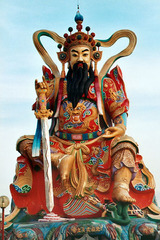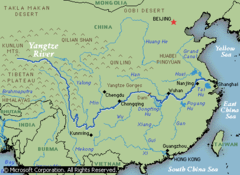Fertile Crescent
A crescent shaped area of fertile land that encompasses Mesopotamia, and land next to the Mediterranean Sea down to Egypt and the Nile River valley.
Mesopotamia
This was the site of one of the first advanced civilizations. Meaning 'Land between the rivers' in Greek, it incompases the area between the Tigris and Euphrates Rivers.
City-State
This is a city which acts as an independent country, with its own government and ruling body. Ur, in Sumer, is said to be the first city-state to have ever developed.
Dynasty
When a ruling family passes the power down from father to son in a long succession.
Cultural Diffusion
When a new idea or object is spread from one culture to another.
Polytheism
When a culture or person believes in more than one god.
Empire
This is created when a single ruler brings together a number of people, nations, and previously independent states under their control.
Hammurabi
A Babylonian ruler who reigned from 1792 B.C. to 1750 B.C.and created some of the first codes of law ever developed.
Delta
This is a broad, marshy, triangular area of land formed by silt deposits, at the mouth of a river.
Narmer
He is the Egyptian king who is credited with bringing about the unification of Upper and Lower Egypt into one Kingdom, around 3000 B.C. He started the first Egyptian dynasty and founded his capital at Memphis.
Pharaoh
This was the title given to the rulers of Egypt who were thought to be gods in their own right.
Theocracy
When the ruler of a country, or empire, has absolute religious authority, and/or rules as a god.
Pyramid
These were the huge tombs, or burial places, for the pharaoh's of ancient Egypt. They believed that a person lived on after death and so they wanted their tombs to be a palace where they could live out eternity.
Mummification
This was done to the bodies of high ranking Egyptians who wished to have their bodies preserved for all time. A body was embalmed and dried to keep it from decaying and then wrapped and placed in a sarcophagus, or coffin.
Hieroglyphics
Meaning 'sacred carving' in Greek, it was the Egyptian form of writing, using pictographs to represent ideas and sounds.
Papyrus
This was an early form of paper made by the Egyptions, from reeds found in marshy areas.
Subcontinent
The area of Asia which includes India, Pakistan, and Bangladesh, that is cut off from the rest of the Asian continent by high mountain ranges.
Monsoon
These are strong seasonal winds that can bring powerful storms to a region sometimes causing massive floods.
Harappan Civilization
The early civilization that occupied the Indus River Valley and was named after the ancient city of Harappa, which was discovered by archeologists in the area. This civilization was known for its advanced city planning.
Loess
This is fertile soil that is blown in from the deserts of Northern and Western China. This is the soil that gives the silt of the Huang He, or Yellow River, its distinctive color.
Oracle Bone
This was an animal bone or tortoise shell which was used, by a priest, to ask questions of the gods. They would carve the question into the bone or shell and then heat it with a hot poker. When the shell, or bone cracked the priest would decipher the gods answer.
Mandate of Heaven
This stated that the gods had given the right to rule to the emperor. He was allowed to rule while he was just and good but if he become evil or foolish the gods would take his power away.
Dynastic Cycle
The patern of rise, decline, and replacement of ruling dynastic families.
Feudalism
A political stystem in which a ruler would give parts of his kingdom to trusted nobles in return for loyalty and military service.
Monarchy
A form of government in which a king or queen rule, usually with absolute power, and then pass the power down to their children.
Sargon
He was a great Akkadian leader who ruled from 2334 B.C. to 2279 B.C. He was able to conquer the Sumerians, and other people groups in the area in order to establish the Akkadian empire.
Sumer
This was the first group of people to form a large civilization with advanced cities, with a ruling dynasty based in their capital of Ur.
Gilgamesh
He is believed to have been a Babylonian King of the city-state Uruk, around 2700 B.C. Many epic tales have been written about him, making him out to be a mighty warrior.
Babylon
A Mesopotamian city-state which became a mighty empire under the leadership of Hammurabi.
Cuneiform
Believed to be the first form of writing, which was created by Sumerian scribes.
Cataracts
The rocky or ruff part of a river that makes it impassable by boats.
Indus Valley
This is the site of the ancient Harappan Civilization which lived in this valley around 2300 B.C. They were advanced city planners and are known for their many farward thinking innovations such as indoor plumbing and a grid based city plan.
Huang He River
Also known as the "Yellow River", because of the its color, it is the main river of China, found in the North of the country. Because of its history of disastrous floods it is sometimes called "China's Sorrow".
Pictographs
This is the use of pictures to represent words, and was the first form of writing used before more complex systems were created.
North China Plain
This is a fertile area, known as China's heartland, between the Huang He and Chang Jiang rivers.
Upper and Lower Egypt
These were once two separate kingdoms, in what would become known as Egypt, until they were united under one pharaoh. The pharaoh Narmer is usually accredited with the unification of Egypt but it could have been done by a pharaoh know as the "Scorpion King".
Shang
These were the people who ruled in Northern China around 1700 B.C. to 1027 B.C. They were the first ruling dynasty to leave written records behind.
Shang Di
This was the sumpreme god of the Han people of China.
Chang Jiang River
Also called the 'Yangtze River', it flows from the Western mountians down to the Yellow Sea, and is one of the two main river of China.

